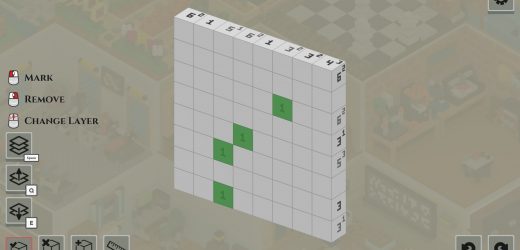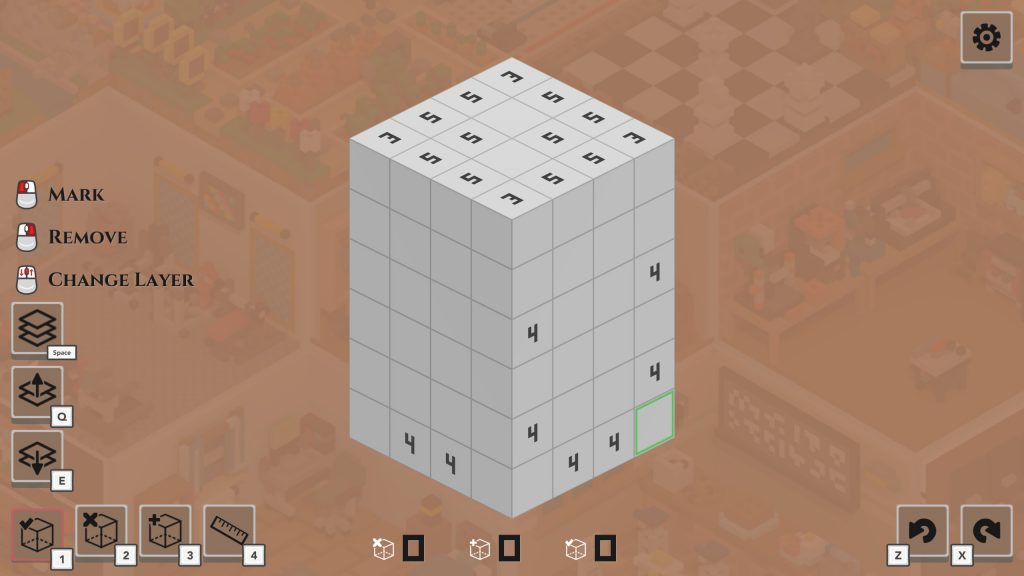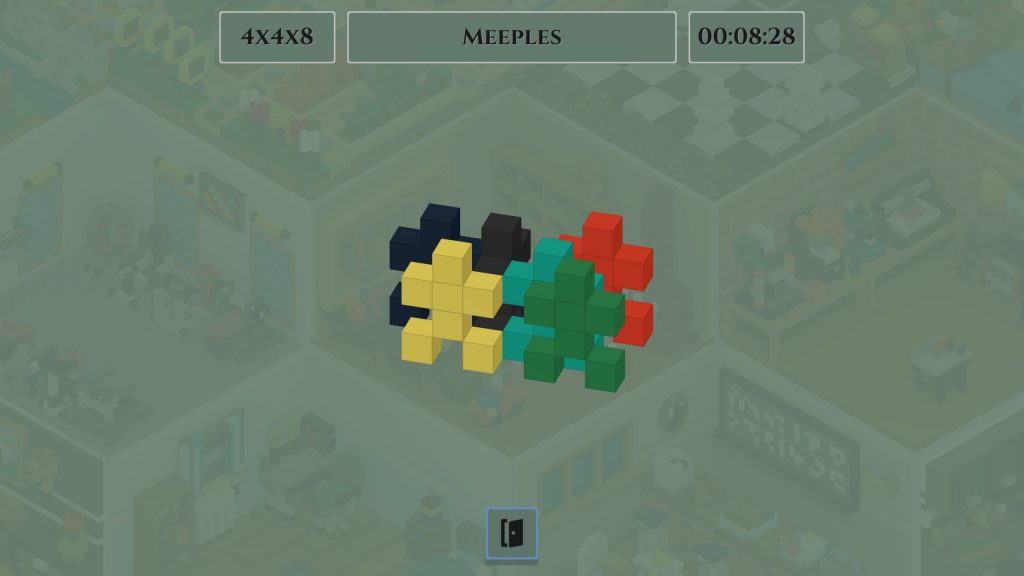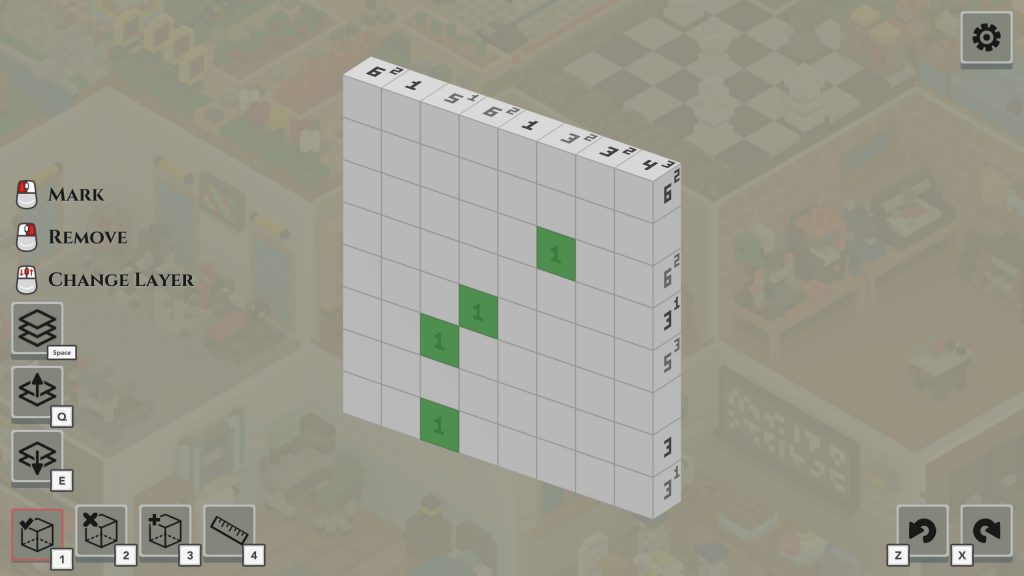Voxelgram (Going Back)

Source: Cashmoneys
Price: £7.19
Where To Get It: Steam
Voxelgram is an interesting beast. A 3D Nonagram, or Picross game, where the objective is to take the clues of row, column, and… Other row? Yes, that works… Anyway, to take the contextual clues on the relevant axes of “(maybe a gap) Number (gap of at least 1) Number, etcetera”, until you have a shape that, when coloured, creates an object or scene. In this case, it’s all objects, but this is the general idea.

But it differs in a few aspects beyond the obvious “In 3D.” Aspects that work, but may at first annoy. And they work precisely because the puzzles are designed around them. For example, that explanation of the clue format? Untrue in this case. Instead, it’s “Number [number of gaps].” It doesn’t specify the gap length, just as a normal Picross puzzle doesn’t… It simply rephrases the format in a way that makes it a little more difficult to decipher, needing more clues to be placed. Similarly, instead of the usual “maybe, yes, no” options, there’s marking blocks and deleting blocks (the yes and no), and… Putting blocks on other blocks, effectively a means of erasing mistakes. And again, this pretty much works because you’re not marking blocks as wrong or right: You’re deleting them.

And finally, there’s the layering system. You can rotate the puzzle fairly easily, and, since the puzzle clues are written on the cubes themselves, rotating doesn’t make things awkward. What takes a tiny bit of getting used to, however, is switching between layers. It’ll always pick the frontmost side, and when you change sides, the entire slice resets before you go through the layers from that direction. Just like every mechanical change in the game, it makes sense in the context, but takes a little getting used to.
Aesthetically, it’s visually clear, with only the gap number being a little small (but only a little), the dioramas look nice when they’re done, and the solemn piano music (with the occasional small choir) gives it this odd, melancholy vibe. This is an unfinished world. Why don’t you finish it?
So it’s interesting. It doesn’t have a lot, but it does a fair bit with it. So, do I have any gripes?

Well, yes. The puzzles vary quite widely in difficulty. There are a few real posers early on, and then… A diorama or two later, it’s a series of easy puzzles, every clue leading very clearly to its conclusion. Which, honestly, feels odd to say considering this is the ideal state of a puzzle of this nature, but it feels oddly… Unsatisfying.
Does this mean I don’t recommend it? Well, no, I do recommend it. Because it makes for a relatively relaxing time, Picross puzzle wise. And there’s at least one less than obvious quality of life feature: For all that it looks like you can go outside of a row or column if you unwisely mouse over another part of the puzzle, it doesn’t actually let you. Makes life easier when deleting blocks. And finally, a word of caution that may apply only to me… Every time I did the tutorial, it erased my progress when I restarted the game. An odd bug, but a minor one where the solution is, essentially, to do the tutorial for the achievement, quit, then start with the diorama puzzles, and never touch the tutorial again.
3D Picross is an interesting deal. And I hope we see more of it, over time.
5 4 3… The Mad Welshman didn’t want to make a puzzle… He just wanted to say out loud a row or column from a Picross puzzle. He doesn’t need a reason.
